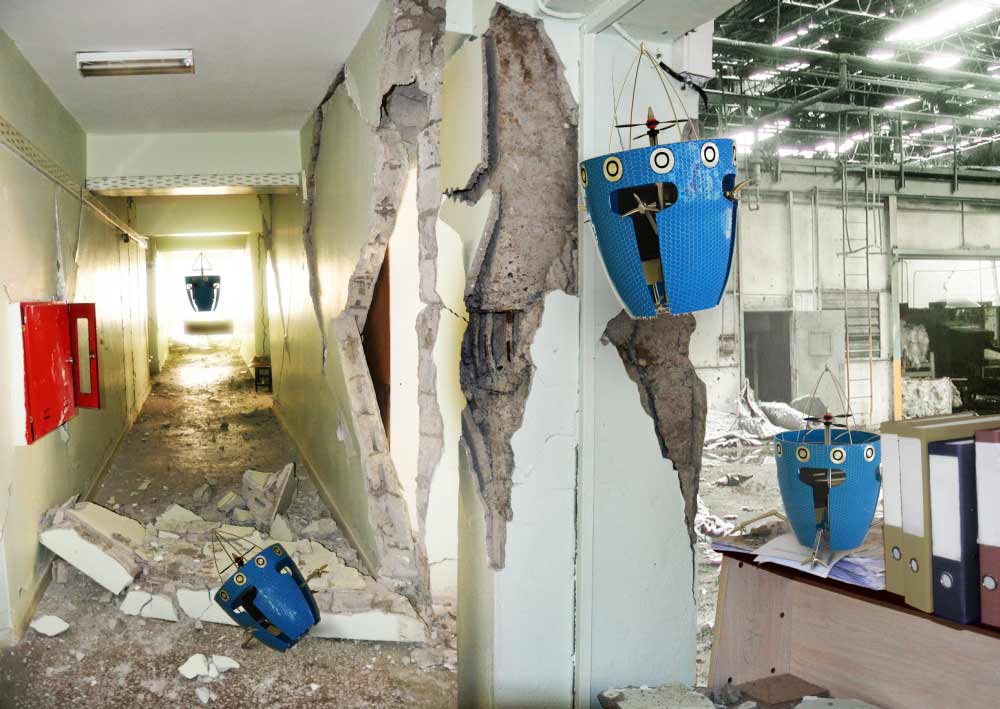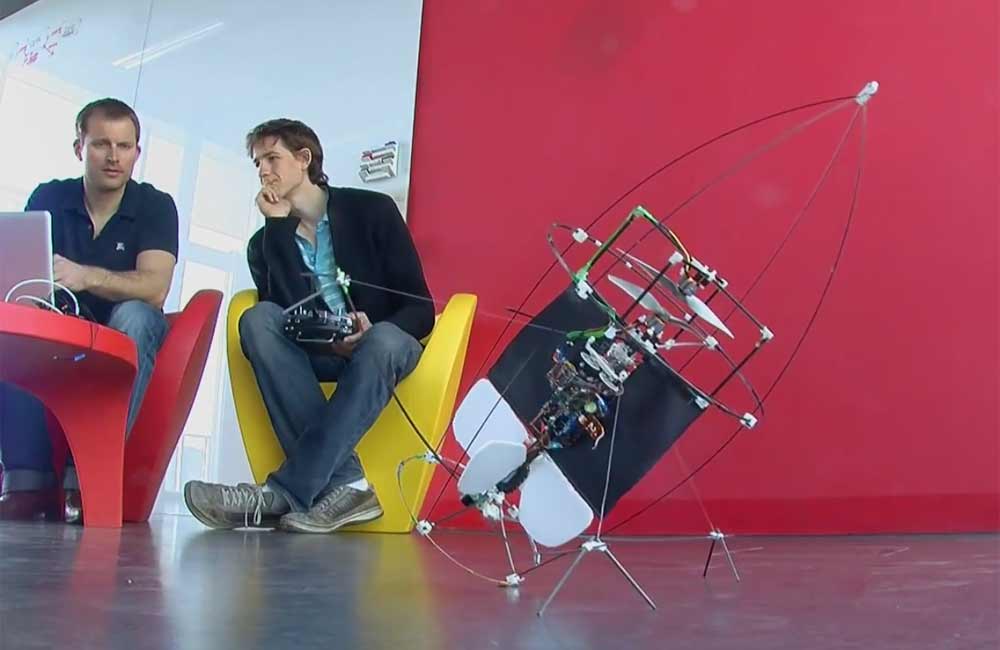Clumsy Insects Inspire Clever Flying Robot

Most flying robots resemble larger helicopters or aircraft that can't risk hard collisions or catastrophic crashes. But a Swiss robot takes a different approach based on flying insects — it can survive clumsily bumping into walls and learn about its environment based on such bumps.
The idea allows the AirBurr robot to navigate within claustrophobic, cluttered conditions indoors or underground without the added sensors or complicated software "brains" needed for avoiding collisions. That could lead to faster deployment of robots in search-and-rescue operations in the aftermath of natural disasters, nuclear meltdowns or similarly dangerous scenarios.
"We believe that this new paradigm will bring flying robots out of the laboratory and allow them to tackle unstructured, cluttered environments," according to Swiss researchers in a 2012 paper for the International Conference on Complex Medical Engineering.

The Swiss researchers at École Polytechnique Fédérale de Lausanne (EPFL) have been testing the AirBurr robot — a hovering drone that resembles a computer's electronic innards stuffed inside a bullet-shaped carbon fiber cage. The lightweight, flexible cage allows the robot to protect its rotors and electronic guts, as well as mimic the way that insects survive collisions with windows or walls.
Four carbon-fiber legs tucked inside the robot can also extend to help it get back on its feet after colliding and falling from the air.
The ability to actively bump around unfamiliar environments means that AirBurr could navigate even with the loss of GPS indoors or underground. Having cheap swarms of such robots may prove the path forward for making robots ready for the real world.
This story was provided by InnovationNewsDaily, a sister site to LiveScience. You can follow InnovationNewsDaily on Twitter @News_Innovation, or on Facebook.
Sign up for the Live Science daily newsletter now
Get the world’s most fascinating discoveries delivered straight to your inbox.










